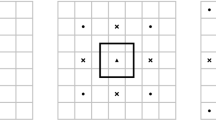
Overview
- Stimmen die Simulationen?
Part of the book series: Notes on Numerical Fluid Mechanics (NONUFM, volume 5)
Access this book
Tax calculation will be finalised at checkout
Other ways to access
About this book
Similar content being viewed by others
Keywords
Table of contents (63 chapters)
-
Steady Airfoil Flow
-
Unsteady Airfoil Flow
-
Front Matter
-
-
Elements of Synthesis and Conclusion
-
Back Matter
About the authors
Bibliographic Information
Book Title: Computation and Comparison of Efficient Turbulence Models for Aeronautics — European Research Project ETMA
Editors: Alain Dervieux, Marianna Braza, Jean-Paul Dussauge
Series Title: Notes on Numerical Fluid Mechanics
DOI: https://doi.org/10.1007/978-3-322-89859-3
Publisher: Vieweg+Teubner Verlag Wiesbaden
-
eBook Packages: Springer Book Archive
Copyright Information: Springer Fachmedien Wiesbaden 1998
Softcover ISBN: 978-3-322-89861-6Published: 04 July 2012
eBook ISBN: 978-3-322-89859-3Published: 17 April 2013
Series ISSN: 0179-9614
Edition Number: 1
Number of Pages: XIV, 581
Number of Illustrations: 385 b/w illustrations
Topics: Aerospace Technology and Astronautics, Fluid- and Aerodynamics, Computational Mathematics and Numerical Analysis



